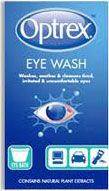 Ingredients
Ingredients- Purified water
- Alcohol
- Boric acid
- Glycerin
- Witch Hazel
- Sodium borate
- Benzalkonium Chloride
Published December 2010
This makes the claim to be "cleansing and moisturising. Contains natural plant extracts".
Ingredients
Alcohol (aka ethanol, C2H5OH) serves both as a solvent for the ingredients and partly to act as a cleansing agent for the eyes.
Boric acid (H3BO3, E284) has E code gives it status as a food preservative but it is rarely used except for caviar in place of salt. It is banned in the USA as a food additive because it can cause kidney damage. Boric acid is a mild antiseptic and is used to preserve urine samples. It has many other uses, such as in making Pyrex, fibreglass, and Silly Putty (which is boric acid in silicone oil). It is a vital part of nuclear reactors because it can control and regulate the flow of neutrons, which are the particles that cause uranium atoms to undergo radioactive decay thereby releasing their energy. Boric acid in syrup is used to kill ants and other crawling insects for whom it is a deadly poison. When dissolved in alcohol it causes the resulting liquid to burn with a green flame.
Glycerin (aka glycerol, propane-1,2,3-triol, E422) is a by-product from the production of soap and biodiesel. It is used in cough medicines and suppositories, and it is added to liqueurs as a thickening agent. Here is helps to solubilise the molecules in the witch hazel extract.
Witch hazel (aka Hamamelis) has long been known as a natural treatment for skin conditions. This plant extract strengthens protein-containing tissue by tightening it. Witch hazel jelly was the traditional treatment for piles. It contains several molecules but the most important ones are the polyphenols known as tannins. These are effective anti-inflammatory agents, hence their use in eye wash, and they can also heal and stop bleeding. Tannins have anti-viral and anti-bacterial powers.
Sodium borate (aka borax, E285) is a mineral which occurs naturally in large deposits in desert regions such as in the US and Turkey. It is used as a flux for soldering jewellery. Like boric acid, it too has been used as a food additive but no longer, although it was once widely used in Asia as an ingredient of noodles. Formerly it was the source of the perborate bleaches used in all washing powders and was excellent at removing stains from fabrics but the wash water had to be very hot water. Borax is used as a fertilizer, especially for olive groves and when this was discovered in the last century, the yield of olives went up remarkably.
Benzalkonium chloride is very soluble in water and it has as its active centre a nitrogen atom which carries a positive charge. It can act as a surfactant to help dissolve dirt but its main action is to keep the eye wash free of microbes as well as helping to remove them from the eyes.